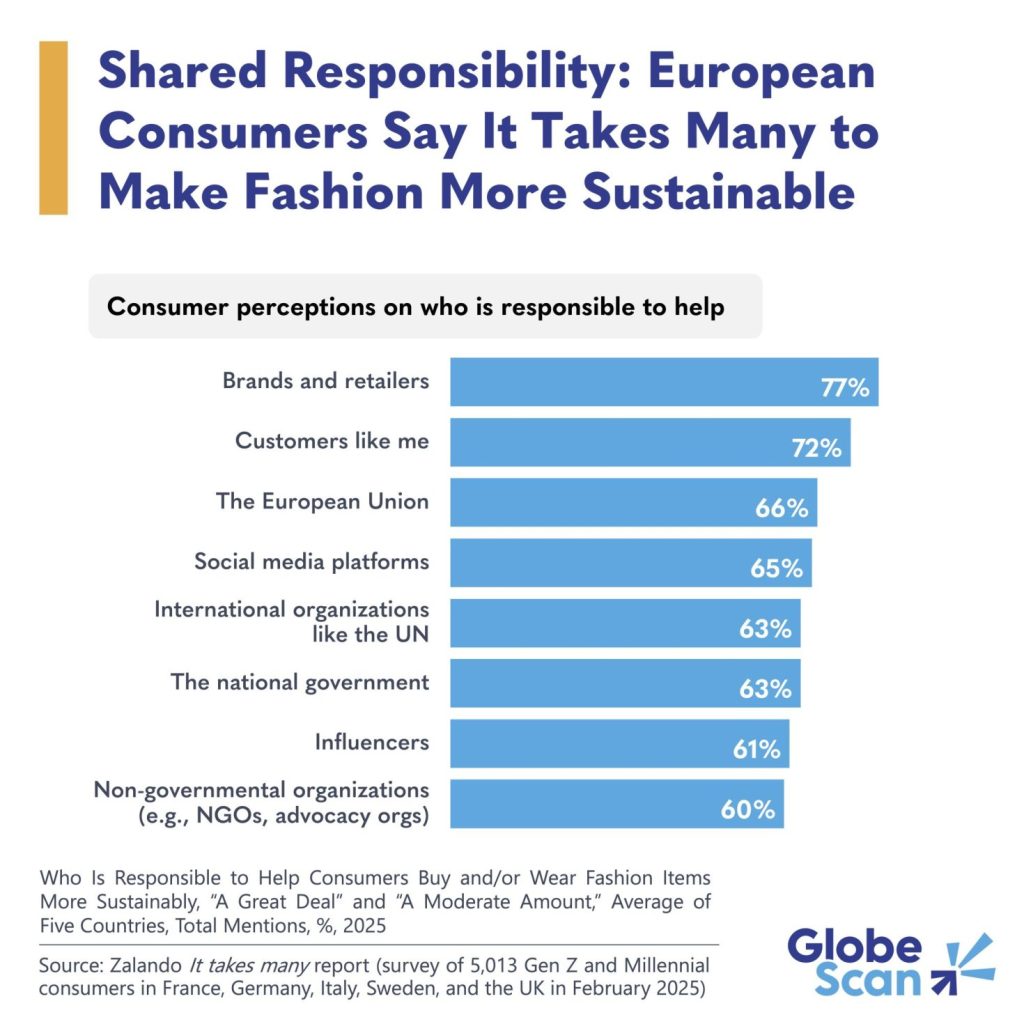Whose responsibility is it anyway?
That’s the question many young consumers in five European markets are weighing in on when it comes to promoting and wearing more sustainable fashion. Trellis data partner GlobeScan recently partnered with European fashion platform Zalando to explore how Gen Z and Millennial consumers view sustainability in fashion.

The findings reveal a clear message: consumers who aspire to buy or wear sustainable clothing items see sustainable fashion as a shared responsibility. While most expect action from brands and retailers (77 percent) and individuals such as themselves (72 percent), they also look beyond these actors to create the right conditions for more sustainable fashion to thrive. Many see important roles for:
- The European Union (66 percent)
- Social media platforms (65 percent)
- National governments (63 percent)
- International organizations (63 percent)
- Influencers (61 percent)
- NGOs (60 percent)
When it comes to expectations for brands and retailers, consumers want more sustainable fashion to be the default. This includes offering affordable, sustainable products (38 percent), using recycled and lower-impact materials (33 percent), reducing packaging waste (32 percent) and designing durable, repairable items (31 percent). Supportive programs such as recycling schemes, resale platforms or rewards for sustainable behavior are also expected.
At the same time, governments and EU institutions are expected to play a more active role. Consumers want them to reduce taxes (lower VAT on more sustainable fashion — 42 percent), fund repair and recycling infrastructure (39 percent) and educate the public on sustainable fashion choices (36 percent). And about one-third of respondents would like to see the introduction of trusted, government-backed eco-labels or product scores.
Social media platforms and influencers are also seen as critical enablers, with the potential to help shift the fashion narrative from short-lived trends and overconsumption to styles that are more circular, conscious, and enduring.
What this means
Closing the attitude-behavior gap in more sustainable fashion requires collective, cross-sectoral action — not just individual or brand-level change. Consumers are ready to make more sustainable fashion choices, but they expect meaningful support from a broad coalition of actors. From governments to social media platforms and influencers, each has a role to play in removing the practical and structural barriers that prevent consumers from turning their aspirations into action.
Based on a survey of more than 5,000 Gen Z and Millennial consumers in France, Germany, Italy, Sweden and the UK in February 2025.

